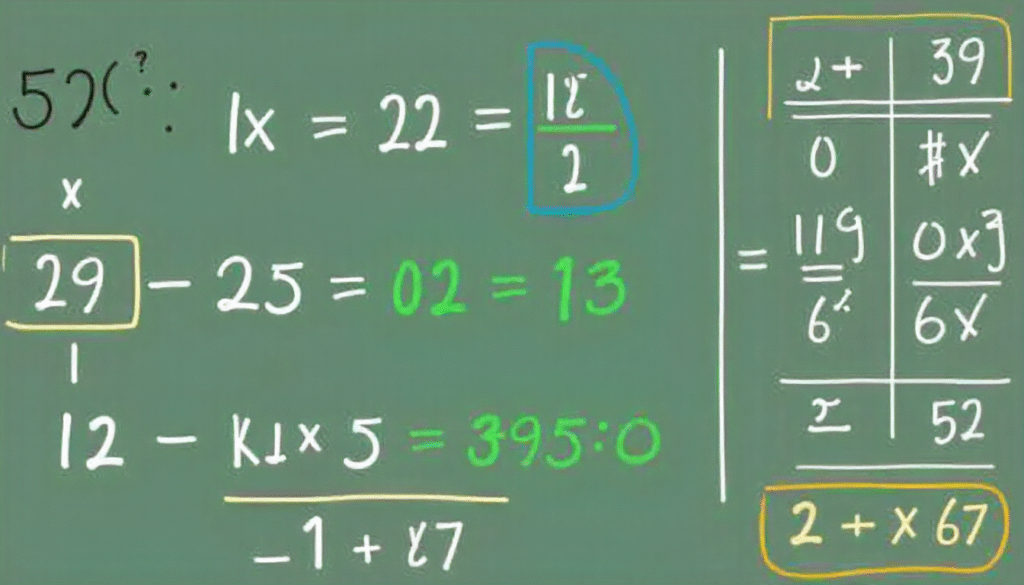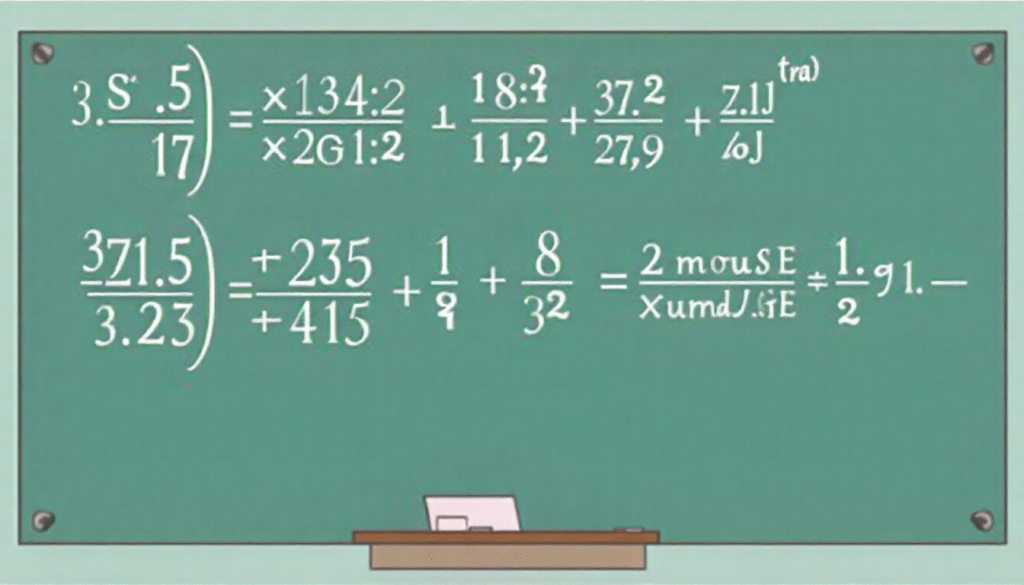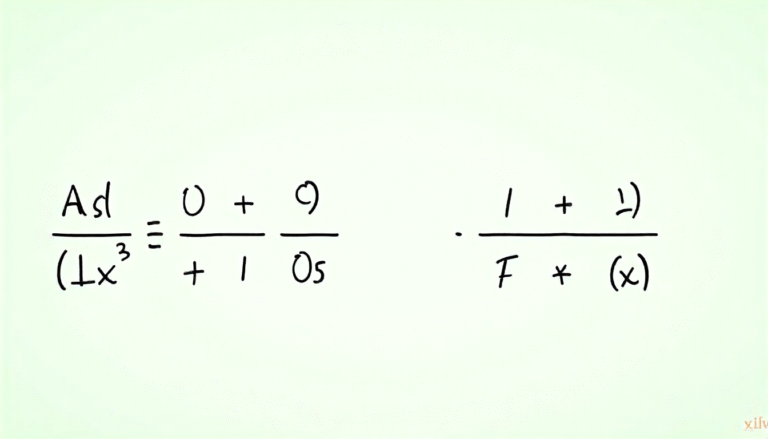
Have you ever looked at a big, scary algebra fraction and thought, “There’s no way I can simplify that!” Well, good news — math doesn’t have to be that tough. With a partial fraction decomposition calculator, you can break down complicated fractions into smaller, easier pieces in just seconds. Whether you’re a student, teacher, or math enthusiast, learning how this calculator works can save you tons of time and frustration.
In this guide, we’ll explore everything you need to know — what partial fraction decomposition means, how it works, why it’s useful, and how a calculator can make the process super easy. We’ll also walk through examples, tips, and answers to common questions so you can feel confident using this powerful math tool.
What Is Partial Fraction Decomposition?
Partial fraction decomposition is a fancy way of saying, “Let’s split a complicated fraction into simpler parts.” Imagine you have a big fraction made from two polynomials — one on top (the numerator) and one on the bottom (the denominator). Instead of solving it as a whole, we rewrite it as a sum of smaller fractions.
For example, if you have: 3x+5(x+1)(x+2)\frac{3x + 5}{(x + 1)(x + 2)}(x+1)(x+2)3x+5
you can rewrite it as: Ax+1+Bx+2\frac{A}{x + 1} + \frac{B}{x + 2}x+1A+x+2B
where A and B are numbers you can solve for. That’s the idea behind partial fraction decomposition! It’s a super handy method in algebra, calculus, and even in engineering or physics problems.
Why Do We Use Partial Fraction Decomposition?

You might wonder why we bother breaking fractions into parts at all. The main reason is that smaller fractions are easier to work with, especially when you’re doing integration in calculus or solving equations.
For instance, integrating a large rational function can be nearly impossible without breaking it down first. But once you rewrite it into partial fractions, the integral becomes simple and straightforward.
Another reason? Clarity. It helps you understand the relationship between terms in your equation. Plus, it makes solving long, messy problems faster and less stressful — especially when using a partial fraction decomposition calculator.
How a Partial Fraction Decomposition Calculator Helps
Manually doing partial fraction decomposition can take time. You need to factor denominators, set up equations, and solve for constants like A, B, and C. One mistake can throw off your entire answer.
That’s where a partial fraction decomposition calculator comes in handy. This tool does all the hard work for you — instantly. You just enter the rational expression, and the calculator automatically performs all the algebraic steps to give you the decomposed result.
Benefits of Using the Calculator:
- Accuracy: It eliminates human error.
- Speed: It gives instant solutions for long, complex problems.
- Learning Aid: It shows step-by-step solutions, so you can understand the process.
- Convenience: Great for students checking homework or teachers preparing lessons.
So instead of spending 20 minutes solving one question, you can get the right answer in seconds — and learn from it too!
Step-by-Step: How to Use a Partial Fraction Decomposition Calculator
Even if you’re new to this, don’t worry. Using the calculator is super easy! Here’s how to do it:
- Open your partial fraction decomposition calculator.
You can find many free options online. Just search for one in your web browser. - Enter your rational expression.
Type the full fraction, such as(3x + 5)/((x + 1)(x + 2)). Make sure your parentheses are correct. - Click “Decompose” or “Simplify.”
The calculator will analyze the expression and break it into partial fractions. - Check the step-by-step explanation.
Many calculators show how they got the answer. This helps you learn the method. - Use the result.
You can use the decomposed form in calculus, integration, or algebra problems.
It’s that simple. No long calculations, no frustration, and no wasted time.
Real-Life Example: Solving a Fraction the Easy Way

Let’s look at a quick example. Suppose you have: 4x+2×2−3x+2\frac{4x + 2}{x^2 – 3x + 2}x2−3x+24x+2
Step 1: Factor the denominator.
x2−3x+2=(x−1)(x−2)x^2 – 3x + 2 = (x – 1)(x – 2)x2−3x+2=(x−1)(x−2)
Step 2: Write the equation as: 4x+2(x−1)(x−2)=Ax−1+Bx−2\frac{4x + 2}{(x – 1)(x – 2)} = \frac{A}{x – 1} + \frac{B}{x – 2}(x−1)(x−2)4x+2=x−1A+x−2B
Step 3: Multiply both sides by the denominator to eliminate fractions.
Step 4: Solve for A and B by plugging in values or comparing coefficients.
You’ll find that:
A=6A = 6A=6 and B=−2B = -2B=−2
So, 4x+2×2−3x+2=6x−1−2x−2\frac{4x + 2}{x^2 – 3x + 2} = \frac{6}{x – 1} – \frac{2}{x – 2}x2−3x+24x+2=x−16−x−22
Now, imagine doing that by hand for a more complex expression. That’s where a partial fraction decomposition calculator really shines. It can handle these steps automatically and give you both the answer and the explanation.
When Do You Need Partial Fraction Decomposition?
You’ll use partial fraction decomposition most often in calculus, especially when integrating rational functions. But it’s also useful in other areas:
- Algebra: Simplifying complex rational expressions.
- Engineering: Solving control systems and signal equations.
- Physics: Breaking down motion and force equations.
- Computer Science: In algorithms that handle symbolic math.
If you’re studying STEM, this concept will appear again and again. Understanding how it works — and using a calculator to check your work — can make a huge difference.
Common Mistakes Students Make
It’s easy to make small errors when doing partial fraction decomposition by hand. Let’s look at some common ones:
- Forgetting to factor the denominator completely.
Always check that your denominator is fully factored before starting. - Wrong setup of equations.
The form of your partial fractions depends on the factors. Repeated factors or quadratic ones change the setup. - Arithmetic mistakes.
Small sign errors can completely change your answer. - Skipping verification.
Always plug your results back into the original equation to verify.
By using a partial fraction decomposition calculator, you can avoid all these problems. It ensures accuracy every single time.
Learning by Example: Step-by-Step Practice
Let’s try another example to really understand the process.
Say we want to decompose: x2+2x+1×3−x\frac{x^2 + 2x + 1}{x^3 – x}x3−xx2+2x+1
Step 1: Factor the denominator:
x3−x=x(x−1)(x+1)x^3 – x = x(x – 1)(x + 1)x3−x=x(x−1)(x+1)
Step 2: Set up the decomposition: x2+2x+1x(x−1)(x+1)=Ax+Bx−1+Cx+1\frac{x^2 + 2x + 1}{x(x – 1)(x + 1)} = \frac{A}{x} + \frac{B}{x – 1} + \frac{C}{x + 1}x(x−1)(x+1)x2+2x+1=xA+x−1B+x+1C
Step 3: Multiply through by the denominator to remove fractions.
Step 4: Expand and match coefficients to solve for A, B, and C.
After solving, you’ll find:
A=1,B=1,C=0A = 1, B = 1, C = 0A=1,B=1,C=0
So, x2+2x+1×3−x=1x+1x−1\frac{x^2 + 2x + 1}{x^3 – x} = \frac{1}{x} + \frac{1}{x – 1}x3−xx2+2x+1=x1+x−11
A partial fraction decomposition calculator can instantly perform these steps and confirm your result.
Advantages of Learning the Method Yourself
Even though the calculator makes things quick, it’s still worth learning how to do it manually. Why? Because understanding the process helps you in other math areas.
When you know how decomposition works, you can:
- Recognize patterns faster in calculus problems.
- Spot errors easily when the calculator output looks odd.
- Gain confidence in algebra and integration.
The calculator is a great learning tool — but your math knowledge is your real power.
Best Online Partial Fraction Decomposition Calculators
There are many great calculators available online. Here are a few reliable ones:
- Symbolab Partial Fraction Calculator – Step-by-step explanations and graphs.
- WolframAlpha – Handles very complex equations with symbolic results.
- Mathway – User-friendly for quick checks.
- Integral Calculator – Combines decomposition with integration steps.
- Calculator.net – Simple layout, perfect for students.
Each of these tools can perform decomposition in seconds. Most of them are free and available on both mobile and desktop.
Tips for Getting Accurate Results
To get the best output from your partial fraction decomposition calculator, keep these tips in mind:
- Double-check your input. One missing parenthesis can change the answer.
- Use proper syntax. Type fractions clearly, like
(x^2+2x+1)/(x^3-x). - Compare manual and calculator results. This builds understanding.
- Save your results. Some calculators allow you to copy the decomposition for later use.
- Understand the steps. Don’t just memorize — learn from the solution.
These small habits will make you a stronger math student.
How Partial Fraction Decomposition Helps in Calculus
If you’ve ever struggled with integration, this technique will be your best friend. Many rational functions can’t be integrated directly. But after decomposition, they become much simpler.
For example, ∫3x+5(x+1)(x+2)dx\int \frac{3x + 5}{(x + 1)(x + 2)} dx∫(x+1)(x+2)3x+5dx
is hard to integrate as it is. But once you decompose it, you get: ∫Ax+1dx+∫Bx+2dx\int \frac{A}{x + 1} dx + \int \frac{B}{x + 2} dx∫x+1Adx+∫x+2Bdx
which leads to an easy logarithmic answer.
A partial fraction decomposition calculator helps set this up in seconds so you can focus on understanding the integration itself.
Common Questions About Partial Fraction Decomposition
1. What exactly does a partial fraction decomposition calculator do?
It breaks a rational expression into simpler fractions by factoring the denominator and solving for constants. It saves time and shows step-by-step explanations.
2. Can I use it for calculus problems?
Yes! It’s especially helpful for integration problems involving rational functions.
3. Do I need to know algebra before using it?
Basic algebra helps, but most calculators explain each step, so even beginners can follow along.
4. Are these calculators free to use?
Most online partial fraction decomposition calculators are completely free, with optional premium features for extra tools.
5. Do calculators work for higher-degree polynomials?
Yes. Many advanced tools can handle cubic or even quartic denominators easily.
6. Is it considered cheating to use one for homework?
Not at all — as long as you’re using it to learn, check your work, or understand the process.
Wrapping It Up: Simplify Math, Don’t Fear It
Math doesn’t have to be frustrating. The partial fraction decomposition calculator is a perfect example of how technology can make learning easier and more enjoyable. Whether you’re solving algebraic fractions, preparing for calculus exams, or exploring advanced equations, this tool can help you understand and master the topic.
By combining manual learning with smart tools, you get the best of both worlds — speed and understanding. So the next time you face a tough rational function, don’t panic. Open your calculator, break it down, and see how simple math can really be!
Final Tip: Practice a few problems by hand, then use a calculator to check your answers. Over time, you’ll develop a deep understanding of partial fractions — and the confidence to tackle any equation that comes your way.





